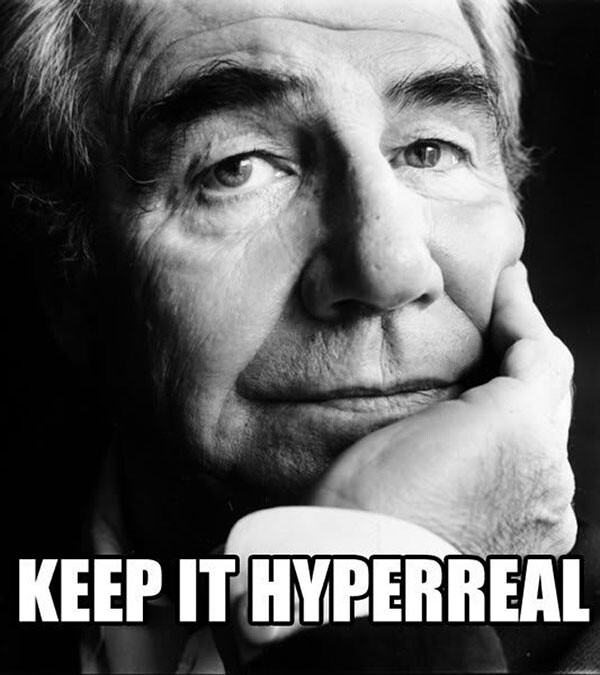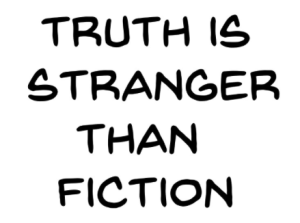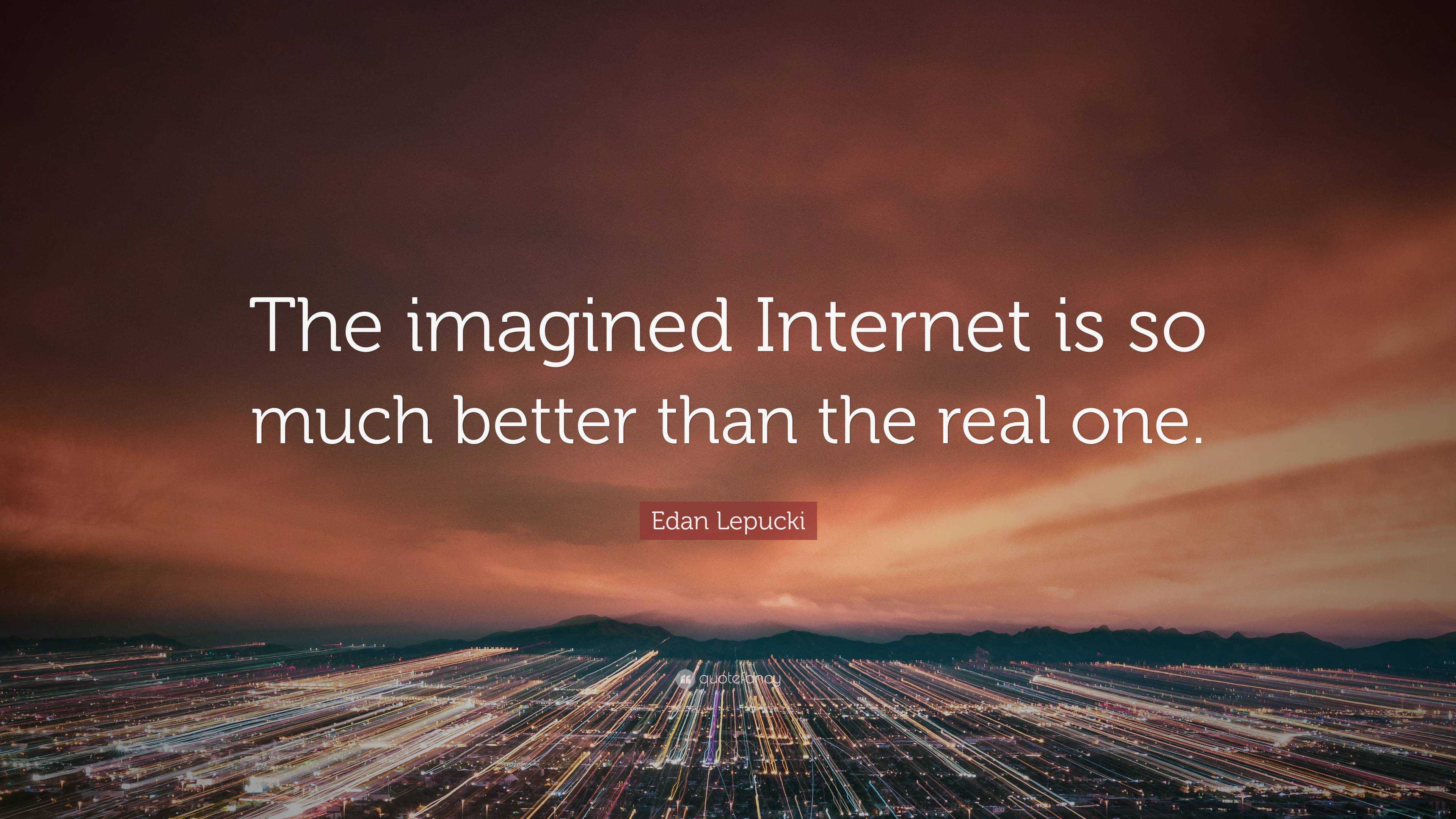Fake news: Language and bullshit and the media
What is Fake News?
Introduction
Fake news — not to minimize it, but it’s kind of a big deal. The Collins English Dictionary named it as their 2017 word of the year, and in 2019, Americans ranked fake news as a bigger problem than terrorism (Martin & Hassan, 2022, p.868).
Definitions
Fake news is a language device used to categorize things, just as much as a real thing that people experience. In other words, even though as a social phenomenon, fake news has very real negative social effects, as a social construction, “the term ‘fake news’ is often applied colloquially to a range of information – sometimes news someone dislikes or does not want to believe” (Martin & Hassan, 2022, p.868).

But generally, fake news is a moniker used to describe journalistic content that is somehow only loosely tied to the truth. It refers to “news articles that are intentionally and verifiably false, and could mislead readers” (Allcott & Gentzkow, 2017, p. 213). There are many ways to classify its particular nature: “Fake news is the deliberate presentation of (typically) false or misleading claims as news, where the claims are misleading by design.” (Gelfert, 2018, p. 108) In turn, Zoglauer emphasizes the formatting of the message: “One characteristic of fake news that distinguishes it from other types of misinformation and disinformation is its design. Fake news is like a Trojan horse: it imitates the news format, giving itself a serious appearance, thus gains the trust of the recipients and is gratefully received and further disseminated” (2023, p. 20). Here, the point isn’t only that those who produce fake news have designs upon an audience (the intent behind the message is to fool or deceive people), but also that it was designed to look like ‘real’ news. Fake news is a simulacrum of the actual news. This is clearly stated in the definition of fake news as “misinformation that has the trappings of traditional news media, with presumed associated editorial processes” (Lazer et al., quoted by Rhodes, 2022, p. 3). Though fabricated, the falsity seems real because of the pretence of professionally written, edited, and sourced content.
It should be noted that, for some, “the term “fake news” also refers to satirical news, parody news, news fabrication, photo manipulation, advertising and public relations, and propaganda” (Olivares-Delgado et al., 2023, p. 537). Stretching the definition beyond the realm of strict news, however, basically turns fake news into a synonym for all disinformation. But one can see how these various forms of manipulated information can be packaged as news (or newsworthy information, to be spread by one and all via social media): [1]
[1]
Therefore, fake news can be understood as “those news articles with intentionally false information, [that] are produced online for a variety of purposes, ranging from financial to political gains” (Shu et al., 2020, p. 2), and thus “fake news may be categorised as a form of disinformation, its subsequent spread via social media may be unintentional” (Tumber & Waisbord, 2021, p. 3). Overall, the negative impact on both individuals and society can be severe: “Fake news can impact readers’ confidence in the news ecosystem. … Fake news intentionally persuades consumers to accept biased or false beliefs for political or financial gain. … Fake news changes the way people interpret and respond to real news, impeding their abilities to differentiate what is true from what is not” (Shu et al., 2020, p. 2).
History
Morris argues that far from arising spontaneously out of the miasma of social media, “fake news should be considered as part of a continuum with forms of media that went before in the 20th Century, and the general trend of postmodernity” (2021, p. 319). Indeed, we might be able to map Baudrillard’s successive phases of simulacra onto the nexus of fake news whereby once upon a time, “real” news through the auspices of objectivity sought to reflect reality, but the introduction of the tabloidization of news brought dysfunction into the journalism environment, auguring a masking and denaturing of reality. Now, news is not just about informing others, but entertaining, pleasing or upsetting them, all focused on eliciting emotional responses (Morris, 2021, p. 323). The more sensational, ludicrous, or exaggerated the news, the more easily it attracts eyeballs (and thus advertising revenue), and the more it becomes newsworthy in terms of being able to attract “engagement.” In essence, “the truth of news has been downplayed in favour of its popularity” (Morris, 2021, p. 328). In a hallway of mirrors, clicks, likes, shares, and comments come to define news, now masking the absence of a profound reality with its profound simulation. “The social media conversation is aimed not so much in the direction of trying to uncover the way the world is, but at promoting the way participants want it to be or find the most entertaining” (Morris, 2021, p. 323). Fake news is a hyperreal simulation of the news, bearing no real relation to news at all, but serving as its own pure simulacrum. Able to escape into echo chambers of their own making, people consume the world how they want to, not how it is. Seen as part of such a historical progression, the questioning of an ontologically objective world is thus not exclusive to social media but rather perfected by it, the product of a long series of media habits, discourse, and representation.

Varieties
As already stated, “fake news” is often used as an umbrella term. According to one analysis, there are at least six different types of fake news: 1. News Satire, 2. News Parody, 3. News Fabrication, 4. Photo manipulation, 5. Advertising and public relations, and 6. Propaganda. Satire is delivered via mock news programs like The Daily Show, which typically use humour or exaggeration to present audiences with news updates. Entertainment rather than information is the primary mission. Parody is similar but does not provide direct commentary on current events through humour but rather plays on the ludicrousness of issues and highlights them by making up entirely fictitious news stories (think The Onion or Walking Eagle News). Fabrication also presents made-up news stories, but with the intention of misleading the audience (meant to be seen as legitimate, but not humorous). Manipulation of visual content also merits its own category, focusing on misleading and misattributed images rather than text. Corporate activities cast as news media but designed for financial gain certainly also manipulate. Finally, propaganda is referred to narrowly as news stories created by a political entity to influence public perceptions. (Tandoc, Lim, & Ling, 2018). All of these are content-based ways of defining and categorizing fake-news. All are, of course, forms of bullshit. After detailing how “fake news is bullshit” (Haigh & Haigh, 2020, p. 4), one might understand the phenomenon through the lens of eight different frames: 1. Fake News as a Weapon of War; 2. Fake News as a Form of Online Dishonesty; 3. Fake News as a Form of State Propaganda; 4. Fake News as a Profitable Business; 5. Fake News as an Extreme Form of Media Bias; 6. Fake News as a Plot to Delegitimate Alternative Media; 7. Fake News as Part of a Post-Truth Society, and 8. Fake News as Flaw in Human Nature ( (Haigh & Haigh, 2020). Admittedly, these are all categories that help us make sense of fake news and how it pops up in different discursive settings. This is useful because “fake news is a term to be studied in its wider context. Necessarily, this means fake news cannot be understood simply as a form of content, but rather as something that has a wider social existence” (Anstead, 2022).
Context & Connections
Maybe the operative lens to best understand fake news is not news, but advertising and promotional culture in general:
Many people do not share “fake news” because they think it’s true information, but because it conforms to the logic of the social media context they inhabit. That logic revolves around grabbing attention and status within the user’s social network, and posts are primarily shared that will achieve this result. It becomes part of a dynamic of self- promotion and personal advertising. This is not a language in the traditional informational sense of signs referring to phenomena in the real world. A popular Instagram user posts images to present the appearance of a certain lifestyle. They may or may not have that lifestyle, but it only matters that their followers believe they do. (Morris, 2021, pp. 319-20)
The debate around ‘fake news’ … is shorthand for a phenomenon which few predicted and, to this day, most commentators and scholars struggle to combat or contest. The networked nature of the Internet, its speed, connectedness and relative uncensorability, combined with the ubiquity of social media platforms such as Facebook and Twitter (both barely more than a decade in existence), have generated an environment in which the concept of Truth in journalism has been seriously compromised” (McNair, 2019, p. 224). The scourge of fake news concerns wider phenomena of trustworthiness, credibility, and truth and throws all of them into an epistemological blender.
As a form of disinformation, “fake news can spread like a wildfire with its continuous click ability, viewability, and shareability” (Radoli & Langmi, 2023, p. 8). When disinformation is considered as a continuum based on truthfulness, fake news is at one extreme, entirely created without a factual basis but able to amplify and reinforce previous beliefs. At the other extreme, there is disinformation such as conspiracy theories that are rooted in a truthful reality but distorted to the point that the core facts are no longer factual (Di Domenico & Visentin, 20210, p. 410). There are notable cases of corporations fighting disinformation-fuelled brand boycotts, specifically because of the spread of fake news. For instance, in the wake of Donald Trump’s election as President in 2016, fake news stories circulated about how Pepsi was “anti-Trump” and the sneaker company New Balance was pro-Trump. In both instances, out-of-context comments were sensationalized and decontextualized and completely fabricated stories started to take on a life of their own. Pepsi-Co’s stock price suffered immediately and New Balance had to confront the neo-Nazi site the Daily Stormer declaring, ‘Your Uniform: New Balance Just Became the Official Shoes of White People.’[2] Respectively, fake news directly affected a brand and had an indirect impact negatively affecting the brand image (Di Domenico & Visentin, 20210, p. 410). Corporate marketing presents a unique challenge given that, “oftentimes, fake news exposes brands to opponents’ attacks, [but] companies can turn a threat into an advantage by carefully managing their stakeholders” (Di Domenico & Visentin, 20210, p. 413). Engaging with the brand community and encouraging or facilitating a supportive participatory culture can mean crises can be managed and reputational threats can be managed while consumer trust can be maintained or even cultivated further. In other words, fake news and resulting corporate controversies need not always be negative; they can provide episodes of productive tension whereby disinformation can prompt greater publicity and reinforce brand connections amongst adherents and loyalists.This is, of course, quite distinct from the larger concern that traditional media outlets are facing their own question of brand reputation, confronting growing skepticism and accusations of bias by the public regarding “mainstream” news sources. “Continual assertions of ‘fake’ news, repeated lies and endemic bullshit reduce complex and diverse realities to dangerously fatuous and nonsensical assertions” (Mackenzie & Bhatt, 2020, p. 11). What Donald Trump calls ‘fake news’ is the ‘real news’ for a different constituency. Thus, the label has arguably become wrought with so many associations, tied to claims of bullshit from every opposing direction, that it may be time to retire the label altogether.
The link to post-truth is explicit. Fake news (along with disinformation) has been identified as the most obvious manifestations of the post-truth era (Oliveres-Delgado et al., 2023, p. 537), while Zoglauer points out how “fake news makes use of a post-truth epistemology: to appear more credible it is embedded in a narrative context and a frame, so that truth and falsity merge and become indistinguishable. Fake news creates a feeling of being true” (2023, p. 21).

In fact, as Bernal points out, “fake news can be more ‘believable’ than the real thing. … A carefully crafted story is not as messy as reality. It does not have so many seemingly inexplicable warts – so it can make ‘sense’ where reality or the real explanation seem counterintuitive” (2018, p. 239).

References
Allcott, H., & Gentzkow, M. (2017). Social media and fake news in the 2016 election. Journal of Economic Perspectives, 31(2), 211–236.
Anstead, N. (2022). What Do We Know and What Should We Do About…? Fake News. Sage.
Bernal, P. (2018). The internet, warts and all. Cambridge University Press.
Di Domenico, G., & Visentin, M. (2020). Fake news or true lies? Reflections about problematic contents in marketing. International Journal of Market Research 62(4), 409–417
Gelfert, A. (2018). Fake news: a definition. Informal Logic 38, pp. 84–117.
Haigh, M., & Haigh, T. (2020) Fighting and Framing Fake News. In P. Baines, N. O’Shaughnessy, & N. Snow (Eds.), The SAGE Handbook of Propaganda (pp. 303-322). SAGE Publications Ltd. http://dx.doi.org/10.4135/9781526477170.n20
MacKenzie, A., & Bhatt, I. (2020). Lies, Bullshit and Fake News: Some Epistemological Concerns. Postdigital Science and Education 2, 9–13 https://doi.org/10.1007/s42438-018-0025-4
Martin, J. D., & Hassan, F. (2022). Testing Classical Predictors of Public Willingness to Censor on the Desire to Block Fake News Online. Convergence: The International Journal of Research into New Media Technologies, 28(3), 867–887.
McNair, B. (2019). The truth is out there, somewhere. Journalism, 20(1), 222–225.
Morris, J. (2021). Simulacra in the Age of Social Media: Baudrillard as the Prophet of Fake News. Journal of Communication Inquiry, 45(4) 319–336.
Olivares-Delgado, F., Benlloch-Osuna, M., Rodríguez-Valero, D., & Breva-Franch, E. (2022, October). Corporate Disinformation: Concept and Typology of Forms of Corporate Disinformation. In International Conference on Design and Digital Communication (pp. 536-550). Springer Nature Switzerland.
Radoli, L., & Langmia, K. (2023). Of Deepfakes, Misinformation, and Disinformation.In K. Langmia (Ed.), Black Communication in the Age of Disinformation: DeepFakes and Synthetic Media (pp. 1-15). Palgrave Macmillan.
Rhodes, S. C. (2022). Filter Bubbles, Echo Chambers, and Fake News: How Social Media Conditions Individuals to Be Less Critical of Political Misinformation. Political Communication 39(1), 1–22 https://doi.org/10.1080/10584609.2021.1910887
Shu, K., Wang, S., Lee, D., & Liu, H. (2020).Mining Disinformation and Fake News: Concepts, Methods, and Recent Advancements. In K. Shu et al. (Eds.), Disinformation, Misinformation, and Fake News in Social Media: Emerging research challenges and opportunities (pp. 1-19). Springer Nature, https://doi.org/10.1007/978-3-030-42699-6_1
Tandoc, E. C., Lim, Z. W., & Ling, R. (2018). Defining “Fake News”: A typology of scholarly definitions. Digital Journalism, 6(2), 137–153, https://doi.org/10.1080/21670811.2017.1360143
Tumber, H., & Waisbord, S. (2021). Introduction. In H. Tumber & S. Waisbord (Eds.), The Routledge Companion to Media Disinformation and Populism (pp. 1-12). Routledge.
Zoglauer, T. (2023). Constructed Truths: Truth and Knowledge in a Post-truth World. Springer.
- see https://researchguides.uoregon.edu/fakenews/issues/defining ↵
- For more information, see Trump supporters call to boycott Pepsi over comments the CEO never madeand New Balance official shoe of white people, say neo-Nazis. ↵

Feedback/Errata